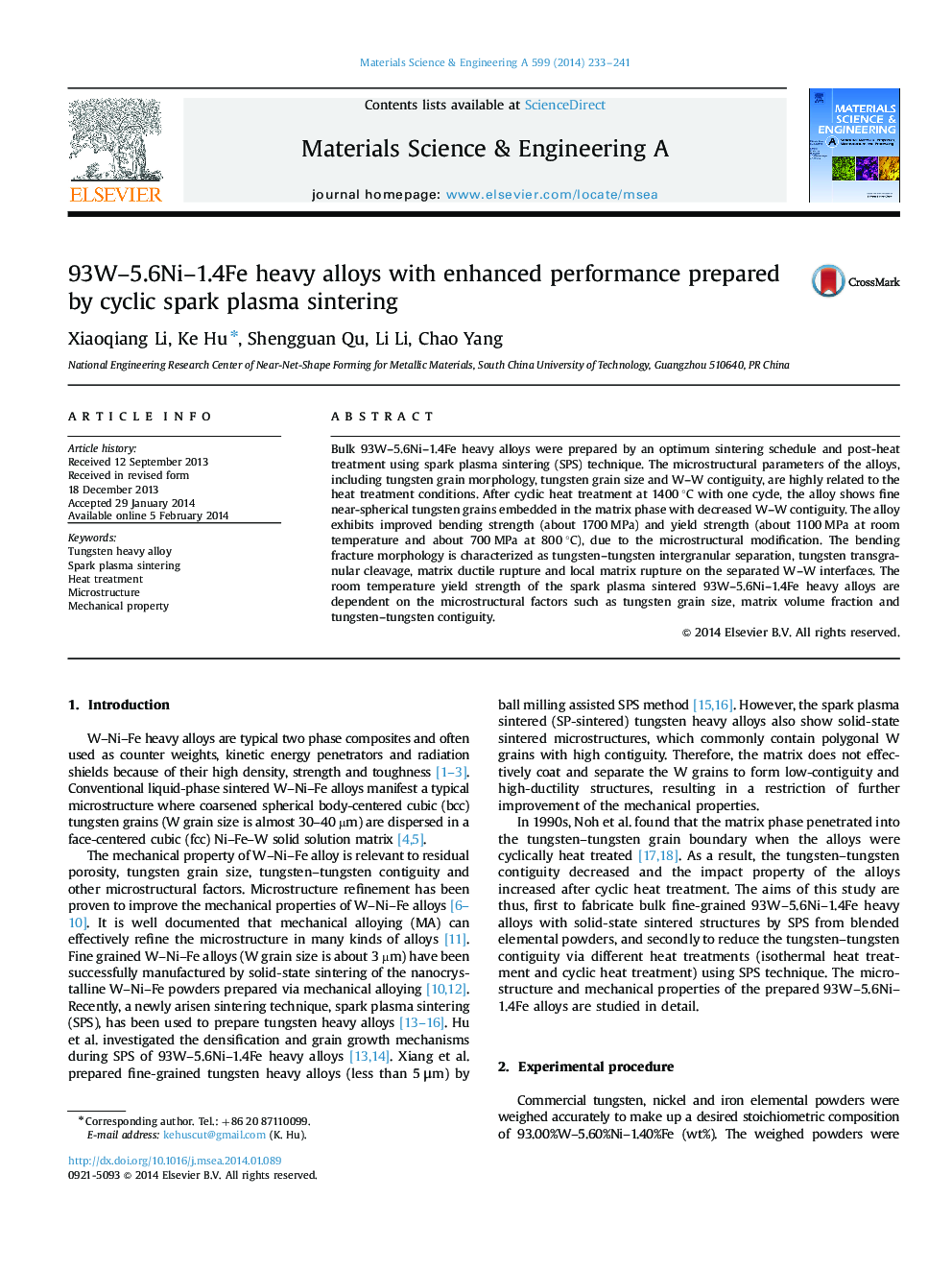| Article ID | Journal | Published Year | Pages | File Type |
|---|---|---|---|---|
| 1575416 | Materials Science and Engineering: A | 2014 | 9 Pages |
Abstract
Bulk 93W-5.6Ni-1.4Fe heavy alloys were prepared by an optimum sintering schedule and post-heat treatment using spark plasma sintering (SPS) technique. The microstructural parameters of the alloys, including tungsten grain morphology, tungsten grain size and W-W contiguity, are highly related to the heat treatment conditions. After cyclic heat treatment at 1400 °C with one cycle, the alloy shows fine near-spherical tungsten grains embedded in the matrix phase with decreased W-W contiguity. The alloy exhibits improved bending strength (about 1700 MPa) and yield strength (about 1100 MPa at room temperature and about 700 MPa at 800 °C), due to the microstructural modification. The bending fracture morphology is characterized as tungsten-tungsten intergranular separation, tungsten transgranular cleavage, matrix ductile rupture and local matrix rupture on the separated W-W interfaces. The room temperature yield strength of the spark plasma sintered 93W-5.6Ni-1.4Fe heavy alloys are dependent on the microstructural factors such as tungsten grain size, matrix volume fraction and tungsten-tungsten contiguity.
Related Topics
Physical Sciences and Engineering
Materials Science
Materials Science (General)
Authors
Xiaoqiang Li, Ke Hu, Shengguan Qu, Li Li, Chao Yang,
